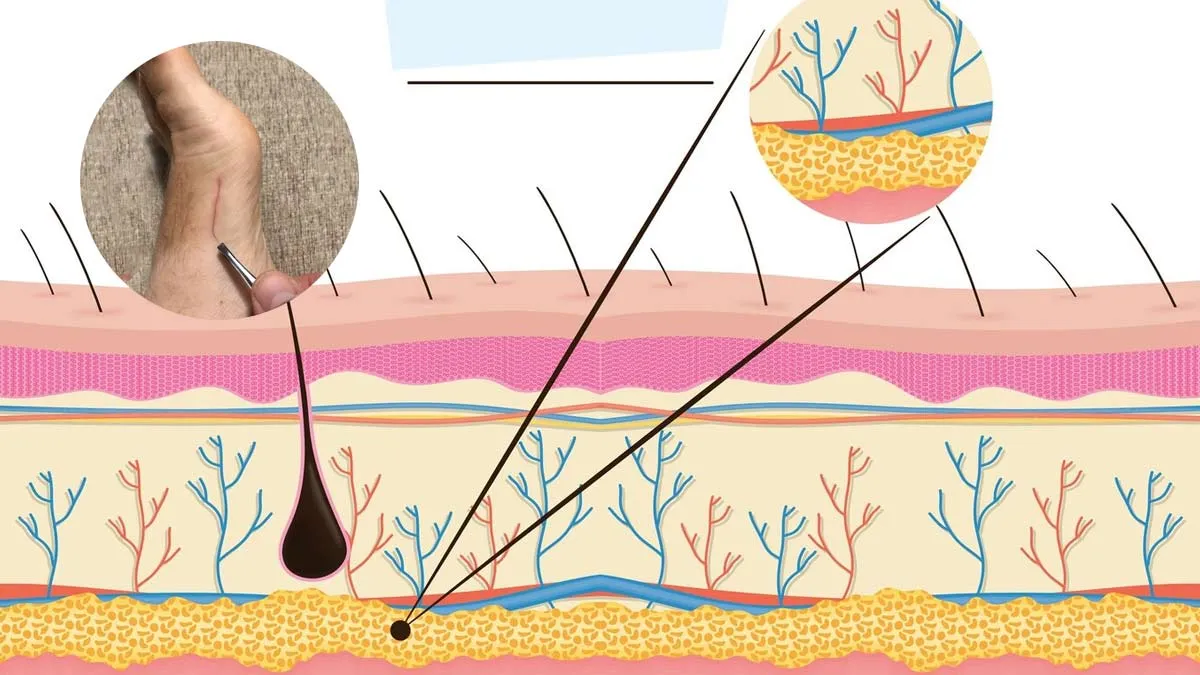
Imagine getting a splinter, but instead of wood or metal, it’s a tiny strand of hair piercing your skin. Meet the hair splinter—a surprising and often painful issue, especially for barbers, pet groomers, or anyone who handles cut hair regularly. These tiny, sharp hair fragments can embed themselves into the skin, causing irritation, redness, or even infections if ignored. But what exactly causes hair splinters? How do you spot them, and what’s the best way to treat them? Regarding the same, an expert breaks down this unusual problem and shares practical solutions.
Table of Content:-
What Are Hair Splinters?
View this post on Instagram
According to Dr Aditya Shah, Dermatologist, Aura Laser and Cosmetic Clinic, Vadodara, hair splinters are a common but underreported issue, especially among people who work with hair. “Hair splinters are often seen in barbers or hair salon workers. Freshly cut hair can be sharp enough to penetrate the skin,” he explains. But it’s not just professionals at risk—anyone can get them. “Loose hair stuck to clothes, bedding, or carpets can also become embedded in the skin, causing pain, itching, or irritation,” he adds.
Hair splinters typically affect areas like the hands, feet, or even the face. While they might seem harmless, Dr Shah warns against ignoring them: “If left untreated, complications like pyogenic granulomas (small, red bumps) or infected sinuses can develop.”
Causes of Hair Splinters
- The edges of freshly trimmed hair that use clippers or razors become miniature needle-like points.
- Surface-bound loose hairs may reach beyond the skin during movement and eventually penetrate the body.
- The risk of occupational exposure becomes high for barbers and stylist workers who handle cutting hair repeatedly in their profession.
- Thick and curly hair produces splinters since the structure of these hair types leads to this effect.
Symptoms to Watch For
-1740652352435.jpg)
- Pain along with tenderness appears at the spot where hair penetrates the skin surface.
- Redness or Swelling: The body’s immune response to the foreign object.
- Mild discomfort affects the surrounding skin that comes into contact with the hair splinter.
- The sign of a visible hair fragment occurs when the skin demonstrates a tiny extended hair piece sticking from or hidden beneath its surface.
How to Remove Hair Splinters?
Dr Shah provides an easy procedure that enables secure hair splinter removal as follows:
- Wash the area thoroughly with soap and water to decrease the chance of infection.
- Wipe tweezers with alcohol before removing hair slowly in the direction where it went into the skin.
- A doctor needs to check any infection that produces either redness spreading or pus formation.
- The expert advises the patients to avoid any use of needles or pins which enter the skin. The skin can either force the hair from its original depth or develop permanent scars.
ALSO READ: Can Banana Peels Really Help Your Skin, or Do Pesticides Pose a Threat?
What Research Says About Hair Splinters
A study published in the Journal of the American Academy of Dermatology discovered that barber professionals experience hair splinters more than 60% of the time each month. A research study proved that rigid hair types which include beard hair together with pet hair show increased chances of causing splinter damage to skin. According to research improper sterilisation practices in salons increase the chance that hair fragments will remain on surfaces.
Prevention Tips
- Protective gloves should be used when handling cut hair because they provide a defence against harmful elements.
- Working professionals in all salons must clean their workplace surfaces by wiping down chairs and tools together with their flooring.
- The frequency of washing aprons and towels along with the bedding should be high because of fabric quality.
- Dry skin forms cracks that allow hair to penetrate more easily so people should moisturise their skin.
When to See a Doctor
- If the splinter is deep or too painful to remove at home.
- If the area becomes warm, swollen, or oozes pus.
- If you develop a rash or fever, indicating infection.
ALSO READ: Open Pores on Face? Here’s How to Reduce Their Appearance
Conclusion
Hair splinters may seem minor, but they can turn into big problems if ignored. Think of them like any other splinter—remove them quickly, keep the area clean, and don’t take chances with your skin’s health. Whether you’re a professional or just dealing with loose hair at home, staying alert and proactive can save you from pain and complications.
Also watch this video
How we keep this article up to date:
We work with experts and keep a close eye on the latest in health and wellness. Whenever there is a new research or helpful information, we update our articles with accurate and useful advice.
Current Version
